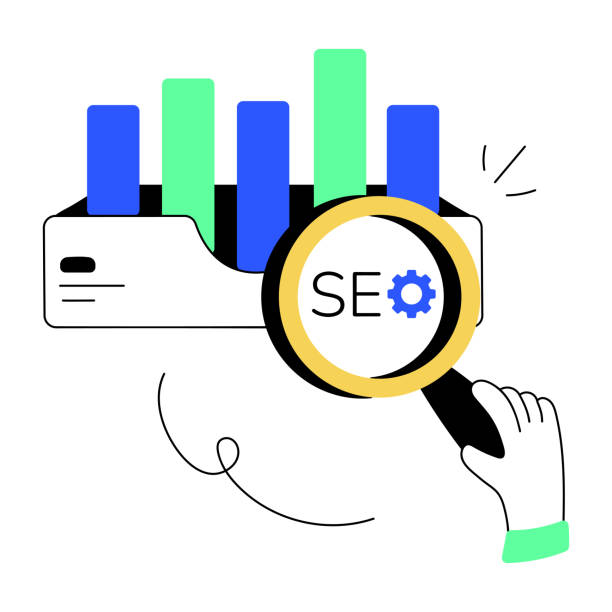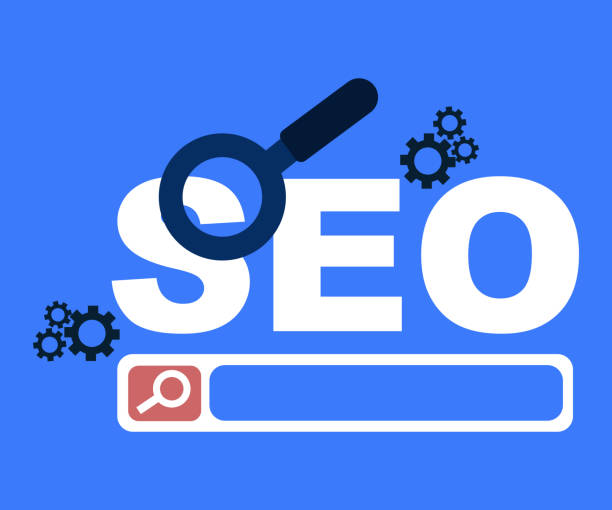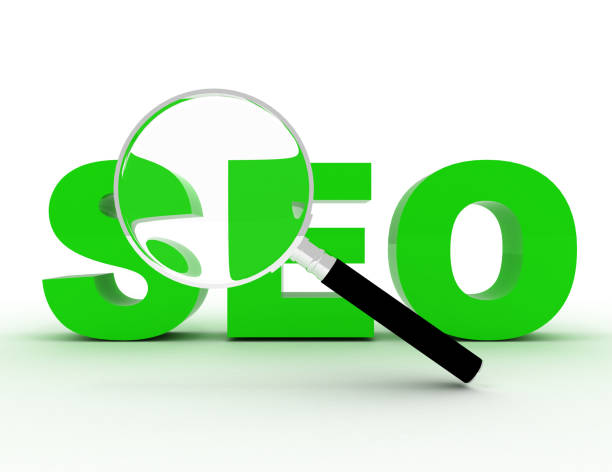What is On-Page SEO and Why is it Important?

What is On-Page SEO and Why is it Important?
#On-Page_SEO refers to a set of actions you take within your website to improve your site’s ranking in Google and other search engine results.
On-page SEO includes optimizing content, HTML tags, site structure, and more.
The importance of on-page SEO stems from the fact that search engines use these factors to better understand your site’s content and its relevance to user searches.
If done correctly, on-page SEO can dramatically increase your site’s organic traffic.
In other words, with optimized on-page SEO, your site ranks higher in search results and more users visit your site.
More information about SEO
The importance of on-page SEO can be summarized in a few key points:
- Increase Site Ranking On-page SEO helps search engines better understand your site’s content, resulting in an increase in your site’s ranking in search results.
- Increase Organic Traffic As your site ranking increases, so does organic traffic (traffic that comes to your site through search results).
- Improve User Experience On-page SEO is not limited to optimizing for search engines; it also includes improving user experience.
Websites with organized structure and high-quality content provide a better experience for users. - Reduce Marketing Costs By focusing on on-page SEO, you can reduce your reliance on paid advertising and attract more organic traffic.
In general, on-page SEO is a cornerstone of SEO strategy and should not be overlooked.
By performing optimized on-page SEO, you can prepare your site for success in the online world.
On-page SEO is an ongoing process and requires continuous updating and improvement.
Once you start on-page SEO, you should regularly check your site’s performance and make the necessary changes.
Is your current e-commerce website design causing you to lose customers and sales?
Rasaweb has the solution with modern, user-friendly e-commerce website designs!
✅ Significant increase in conversion and sales rates
✅ Build a strong brand and gain customer trust
⚡ Get a free e-commerce website design consultation from Rasaweb!
Keyword Research – The Foundation of On-Page SEO

Keyword Research – The Foundation of On-Page SEO
#Keyword_Research is the first step in on-page SEO.
You need to identify the words your target audience uses to search for your products or services.
These words should be relevant to your business and have a decent search volume.
There are various tools for keyword research, including Google Keyword Planner, Ahrefs, and SEMrush.
Using these tools, you can find keywords related to your business and check their search volume.
You can also check the competition level for each keyword.
Choosing the right keywords is very important.
You should choose words that are relevant to your business, have a decent search volume, and have low competition.
In other words, you should choose words that have a high chance of ranking in search results.
Once you have found the right keywords, you need to use them in your site’s content.
This includes using keywords in page titles, meta descriptions, main and subheadings, and content text.
But you should be careful to use keywords naturally and reasonably.
Overuse of keywords can lead to your site being penalized by Google.
Do on-page SEO by choosing the right keywords.
In addition, you should also pay attention to long-tail keywords.
Long-tail keywords are longer search phrases that usually have lower search volumes, but their conversion rates are higher.
For example, instead of the keyword “sports shoes,” you can use the phrase “buy men’s sports shoes for running.”
Using long-tail keywords can help you attract more targeted traffic to your site.
Strong on-page SEO requires attention to this point.
Optimizing Title and Meta Descriptions

Optimizing Title and Meta Descriptions
The Title Tag and Meta Description are the most important elements of on-page SEO.
The title is the text that appears in the browser’s title bar and in search results.
The meta description is the text that appears below the title in search results.
The title and meta description should be attractive and relevant to the page’s content, and include the main keywords.
The title should be a maximum of 60 characters, and the meta description should be a maximum of 160 characters.
A good title should:
- Contain the main keyword.
- Be attractive and catchy.
- Be relevant to the page’s content.
- Be a maximum of 60 characters.
A good meta description should:
- Contain the main keyword.
- Be a summary of the page’s content.
- Be attractive and encouraging to click.
- Be a maximum of 160 characters.
Optimizing the title and meta description helps search engines better understand the content of the page and encourages users to click on your site’s link.
On-page SEO with these simple but vital things brings amazing results.
The more clicks on your site’s link, the higher your site’s ranking in search results.
Don’t underestimate on-page SEO.
| Feature | Description |
|---|---|
| Maximum Title Length | 60 Characters |
| Maximum Meta Description Length | 160 Characters |
Optimizing Page Content

Optimizing Page Content
Page content is the heart of on-page SEO.
Your content should be high-quality, relevant to the target keywords, and valuable to users.
High-quality content means that your content should be accurate, complete, and up-to-date.
Relevant content means that your content should answer users’ questions and needs.
Valuable content means that your content should provide users with useful information.
Your on-page SEO depends on the quality of your content.
Weak content will lead to weak on-page SEO.
In addition, your content should be optimized.
This includes using keywords in the page title, meta description, main and subheadings, and content text.
But you should be careful to use keywords naturally and reasonably.
Overuse of keywords can lead to your site being penalized by Google.
You should also pay attention to the readability of your content.
Your content should be easily readable and understandable.
Use short paragraphs, headings and subheadings, and images to make your content more attractive and readable.
Remember that your content should be written for users, not for search engines.
Google cares about content that is valuable to users.
So do your best to produce high-quality and valuable content for your users.
On-page SEO means satisfying users and search engines simultaneously.
How much does it cost you to lose business leads due to an unprofessional website? Solve this problem forever with a professional company website design by Rasaweb!
✅ Increase credibility and trust of potential customers
✅ Easier attraction of new business leads
⚡ Get a free consultation now!
Optimizing Images

Optimizing Images
Images play an important role in the attractiveness and user experience of your site.
But images can also affect your site’s on-page SEO.
To optimize images for SEO, you need to follow a few points.
First, optimize the file name of your images.
Instead of using default names like “IMG_1234.jpg,” use descriptive and content-related names.
For example, if the image is of a sports shoe, you can name the file “men-sports-shoe.jpg.”
Image on-page SEO is also part of overall site optimization.
Second, use the Alt tag for your images.
The Alt tag is text that is displayed instead of the image if it does not load.
Also, search engines use the Alt tag to understand the content of the image.
The Alt tag should be descriptive and relevant to the content of the image and include the main keyword.
For example, if the image is of a sports shoe, you can set the Alt tag to “men’s sports shoe.”
Strengthen your on-page SEO with your images.
Third, reduce the file size of your images.
Large images can slow down your site’s loading speed and affect user experience.
To reduce image size, you can use image compression tools.
You can also use optimized image formats like WebP.
Site loading speed is an important ranking factor in Google.
Fast on-page SEO makes the site more likable to Google.
Optimizing URL Structure
![]()
Optimizing URL Structure
Your site’s URL structure should be logical and understandable.
URLs should be short, descriptive, and contain keywords.
Avoid using long and incomprehensible URLs.
For example, instead of using the URL “/page?id=1234”, use the URL “/article/on-page-seo”.
A good URL structure helps search engines better understand your site’s structure and helps users navigate your site more easily.
On-page SEO with a proper URL structure creates a better user experience.
In addition, you should use a fixed and consistent URL structure.
For example, if you decide to use hyphens (-) to separate words in URLs, you should do this in all URLs on your site.
Changing the URL structure can lead to SEO problems.
Regular and stable on-page SEO will bring better results.
Remember that URLs should also be understandable to users.
A good URL should show users what the page’s content is about.
Successful on-page SEO is optimized for both search engines and users.
Internal Linking – Creating a Communication Network on the Site
![]()
Internal Linking – Creating a Communication Network on the Site
#Internal_Linking means linking from one page to another within your site.
Internal linking helps search engines better understand your site’s structure and helps users navigate your site more easily.
Internal linking can also help increase the ranking of important pages on your site.
For internal linking, you should use relevant and descriptive Anchor Text.
For example, if you want to link to the “On-Page SEO” page, you can use the Anchor Text “Comprehensive Guide to On-Page SEO.”
On-page SEO improves with strong internal linking.
When internal linking, you should pay attention to a few points.
First, the links should be relevant to the page’s content.
Second, the links should point to important pages on your site.
Third, avoid using too many links on a single page.
Internal linking should be done naturally and reasonably.
On-page SEO with targeted linking increases site traffic.
| Benefits of Internal Linking | Description |
|---|---|
| Improve Site Navigation | Helps users easily navigate the site. |
| Increase Ranking of Important Pages | Helps search engines identify important pages on the site. |
| Improve Search Engine Understanding of Site Structure | Helps search engines better understand the site’s structure. |
Site Loading Speed – A Critical Ranking Factor

Site Loading Speed – A Critical Ranking Factor
Site loading speed is one of the important factors in Google ranking.
Users expect sites to load quickly.
If your site loads slowly, users may leave your site and go to other sites.
Google also cares about sites that have high loading speeds.
On-page SEO with appropriate loading speed attracts users’ satisfaction.
To improve your site’s loading speed, you can do a few things.
First, optimize your images.
Second, use a quality web hosting service.
Third, use a content delivery network (CDN).
Fourth, optimize your HTML, CSS, and JavaScript code.
Fifth, use caching plugins.
On-page SEO with speed optimization makes competition easier.
There are various tools for checking site loading speed, including Google PageSpeed Insights, GTmetrix, and WebPageTest.
Using these tools, you can check your site’s loading speed and identify its problems.
On-page SEO requires continuous review and improvement.
Does your current website create the trust that potential customers should have in your business? If the answer is no, it’s time to have your professional and impactful company website with Rasaweb.
✅ Completely custom design tailored to your brand identity
✅ Increased lead generation and credibility of your business in the eyes of customers⚡ Contact us for a free consultation!
Site Responsiveness – Compatibility with Different Devices
![]()
Site Responsiveness – Compatibility with Different Devices
Responsiveness means that your site should be displayed correctly on different devices such as computers, tablets, and mobile phones.
Given that a large number of users access the Internet through mobile phones, your site’s responsiveness is very important.
Google also cares about sites that are responsive.
Optimize on-page SEO with responsive design.
To make your site responsive, you need to use a responsive template.
Responsive templates automatically adjust the size and layout of your site based on the user’s device screen size.
You can also use Media Queries in CSS to adjust the display of the site on different devices.
Successful on-page SEO is a site that looks good on any device.
To check if your site is responsive, you can use Google’s Mobile-Friendly Test tool.
On-page SEO is guaranteed with a mobile-optimized site.
Schema Markup – Helping Search Engines Better Understand Content

Schema Markup – Helping Search Engines Better Understand Content
Schema Markup is code that you can add to your site’s pages to help search engines better understand your site’s content.
Schema Markup can provide search engines with information such as content type, title, description, author, and publication date.
By using Schema Markup, you can increase your site’s ranking in search results and attract more traffic.
Advanced on-page SEO using Schema Markup distinguishes the site from competitors.
There are different types of Schema Markup that you can use.
Some of the most common types of Schema Markup are Article, Product, Event, LocalBusiness, and Recipe.
To use Schema Markup, you can use the Schema Markup Generator tool.
Accurate on-page SEO using Schema provides better understanding of content for search engines.
Schema Markup is a powerful tool that can help you improve your site’s on-page SEO.
Up-to-date and efficient on-page SEO is the key to success in the online world.
By using Schema Markup, you can increase your site’s ranking and attract more traffic.
Frequently Asked Questions
| Row | Question | Answer |
|---|---|---|
| 1 | What is On-Page SEO? | On-page SEO refers to the set of actions taken within a website (on its pages) to improve the site’s ranking in search engine results. This includes optimizing content, site structure, and HTML code. |
| 2 | Why is On-Page SEO important? | On-page SEO helps search engines better understand the content of a page and determine whether that page is relevant and valuable to user searches. This better understanding leads to a higher ranking. |
| 3 | What is the first and most important step in On-Page SEO? | Keyword Research is the most important initial step. By finding the right keywords, targeted and relevant content can be produced to meet the needs of users. |
| 4 | What is the role of the Title Tag in On-Page SEO? | The title tag is one of the most important ranking factors and should include the main keyword. This tag is displayed as the page title in search results and affects the click-through rate (CTR). |
| 5 | What is the importance of Meta Description? | The meta description does not directly affect the ranking, but by providing an attractive summary of the page’s content in the search results, it can encourage users to click and thus increase the click-through rate (CTR). |
| 6 | Why is the use of headings (H1, H2, etc.) important in content? | Headings help structure content and improve readability for users and search engine crawlers. Using keywords in headings also helps the search engine better understand the topic. |
| 7 | What does Image Optimization in On-Page SEO include? | It includes compressing images to reduce size, using descriptive and related file names, and filling in the Alt tag (alternative text) with related keywords to help search engines understand the content of the image. |
| 8 | What is meant by Internal Linking in On-Page SEO? | Internal linking refers to creating links between different pages of a website. This helps spread page equity (Link Equity), improve user experience, and help search engine crawlers discover new pages. |
| 9 | Why is Page Speed important for On-Page SEO? | Page loading speed is a direct ranking factor and greatly affects user experience. Slow pages can increase the Bounce Rate and decrease user engagement. |
| 10 | What role does quality content play in On-Page SEO? | Quality content, which is comprehensive, unique, and valuable to the user, is the core of on-page SEO. This content not only attracts and retains users, but also sends positive signals to search engines and helps improve ranking. |
And other services of Rasa Web Advertising Agency in the field of advertising
Intelligent Sales Automation: Professional optimization to increase sales using attractive user interface design.
Intelligent Customer Journey Map: A fast and efficient solution for digital branding with a focus on Google Ads management.
Intelligent Advertising Campaign: A combination of creativity and technology for online growth through custom programming.
Intelligent Website Development: A novel service to increase campaign management through user experience customization.
Intelligent Marketing Automation: A professional solution to improve SEO ranking by focusing on attractive user interface design.
And more than hundreds of other services in the field of internet advertising, advertising consulting and organizational solutions
Internet Advertising | Advertising Strategy | Advertorials
Resources
SEORooz – What is On-Page SEO?
,Faraz SEO – What is On-Page SEO?
,Nikan SEO – What is On-Page SEO?
,LimoTop – Complete On-Page SEO Tutorial with Practical Techniques
? For a big leap in the digital world and reaching the peak of success, Rasa Web Digital Marketing Agency, offering comprehensive services including multilingual website design, professional SEO, social media management and targeted advertising campaigns, paves the way for the growth of your business.
📍 Tehran, Mirdamad Street, next to the Central Bank, South Kazerun Alley, Ramin Alley No. 6




